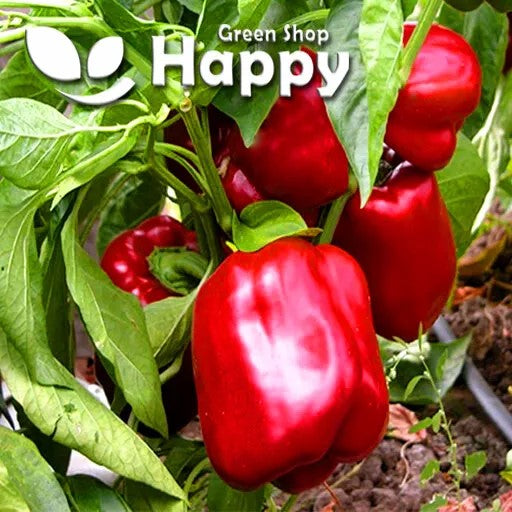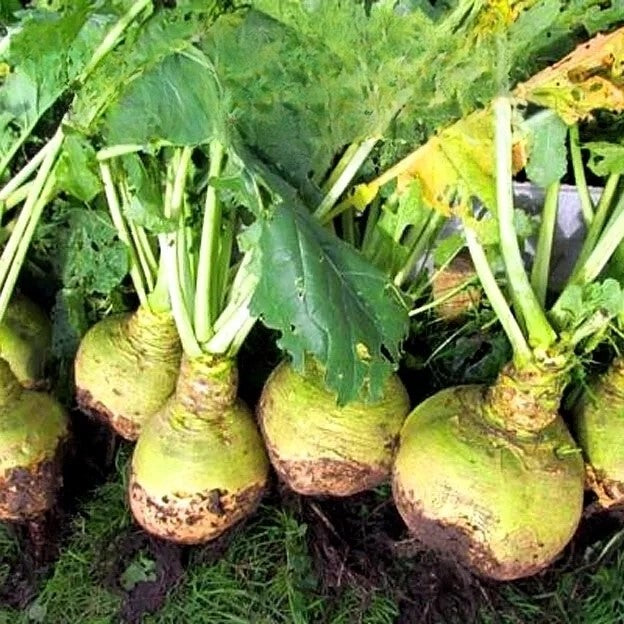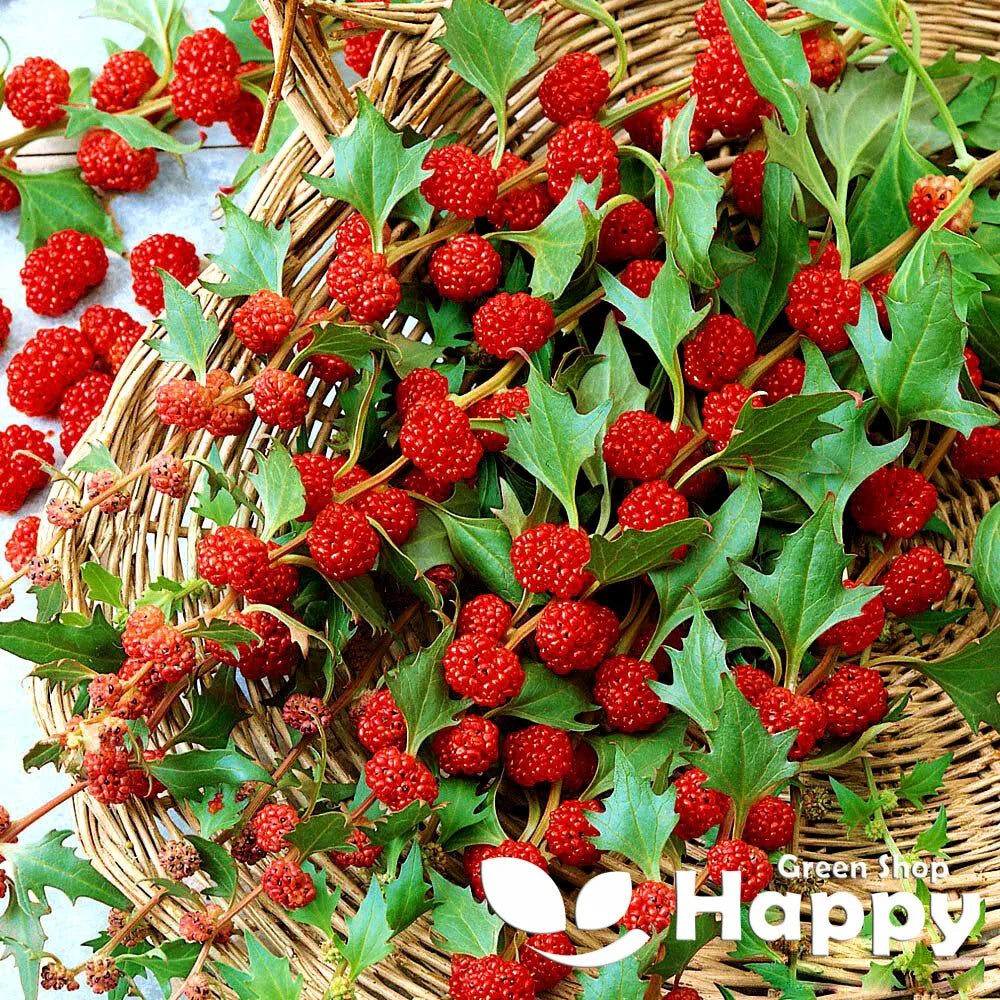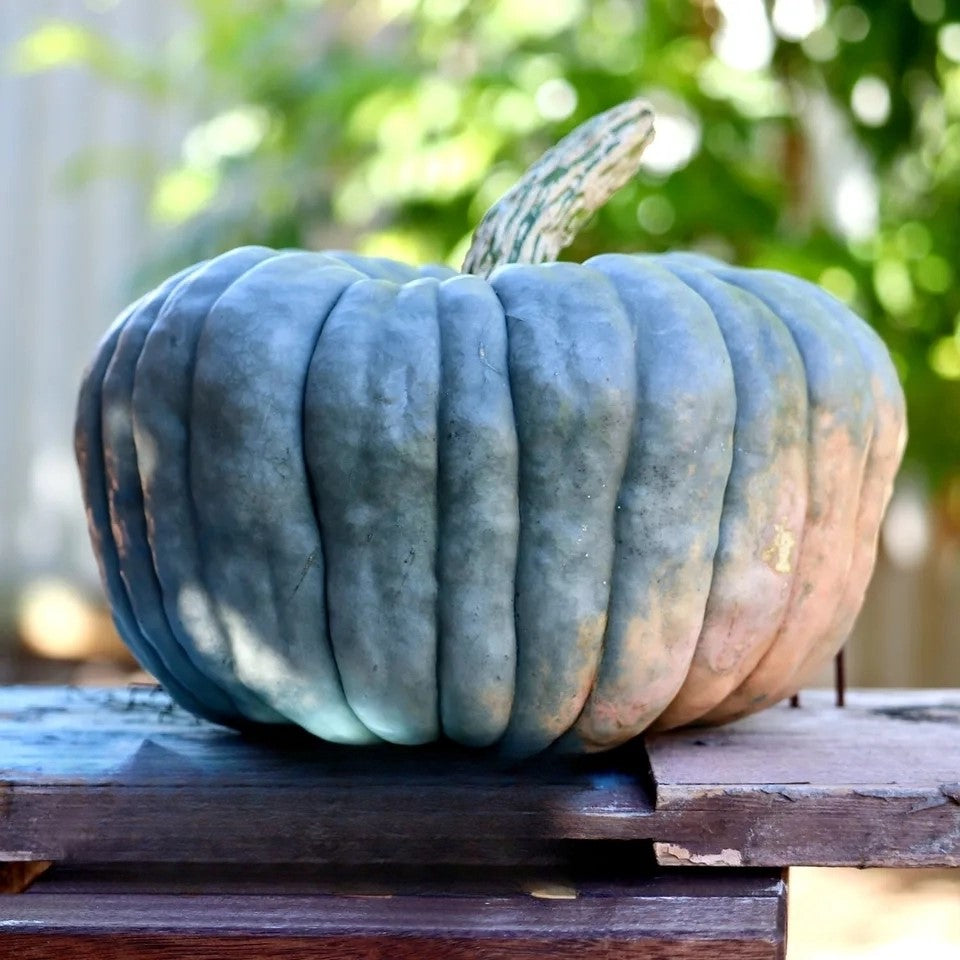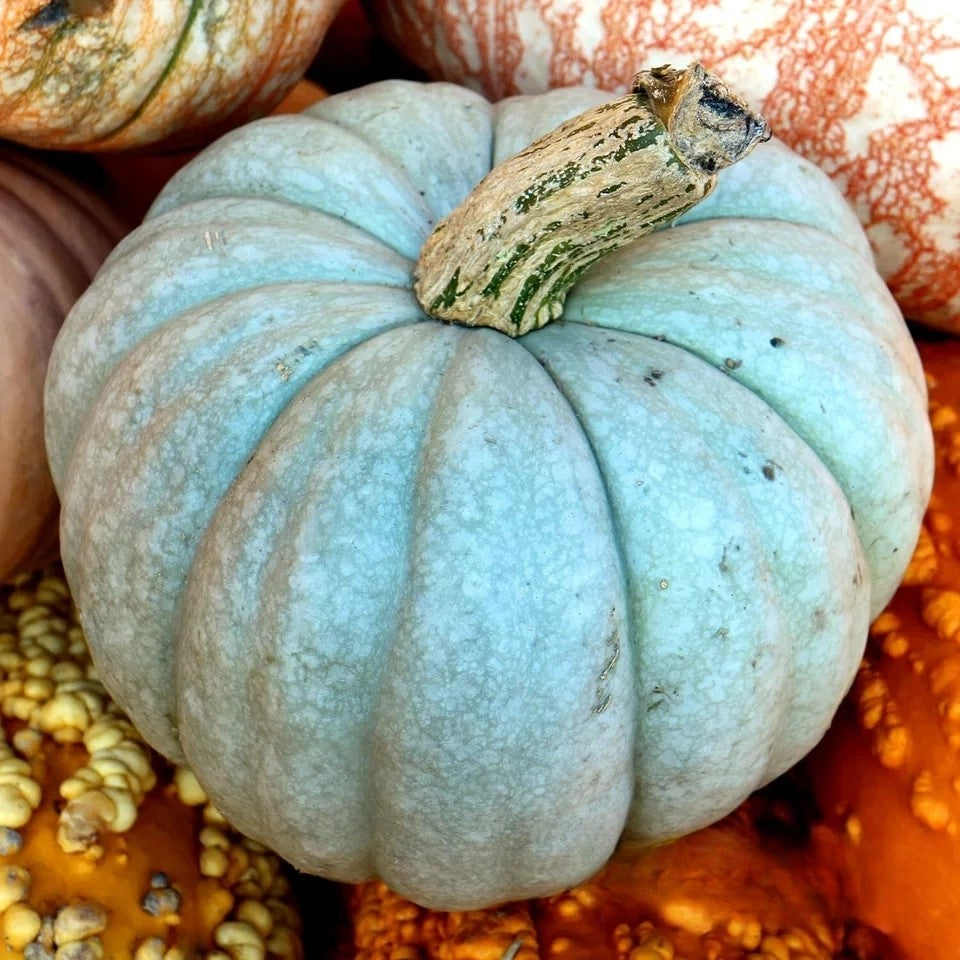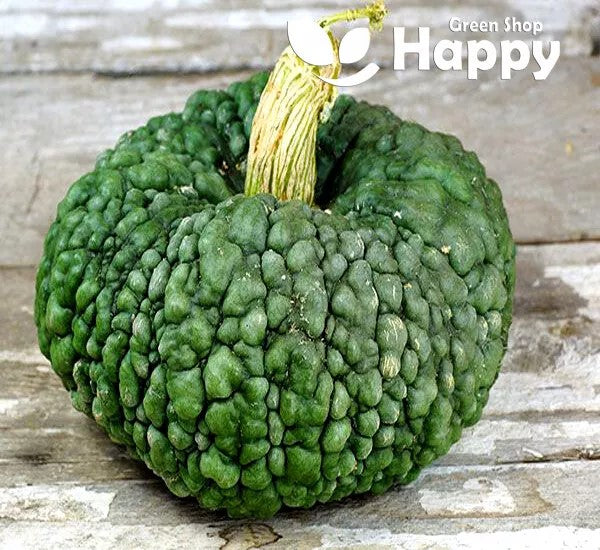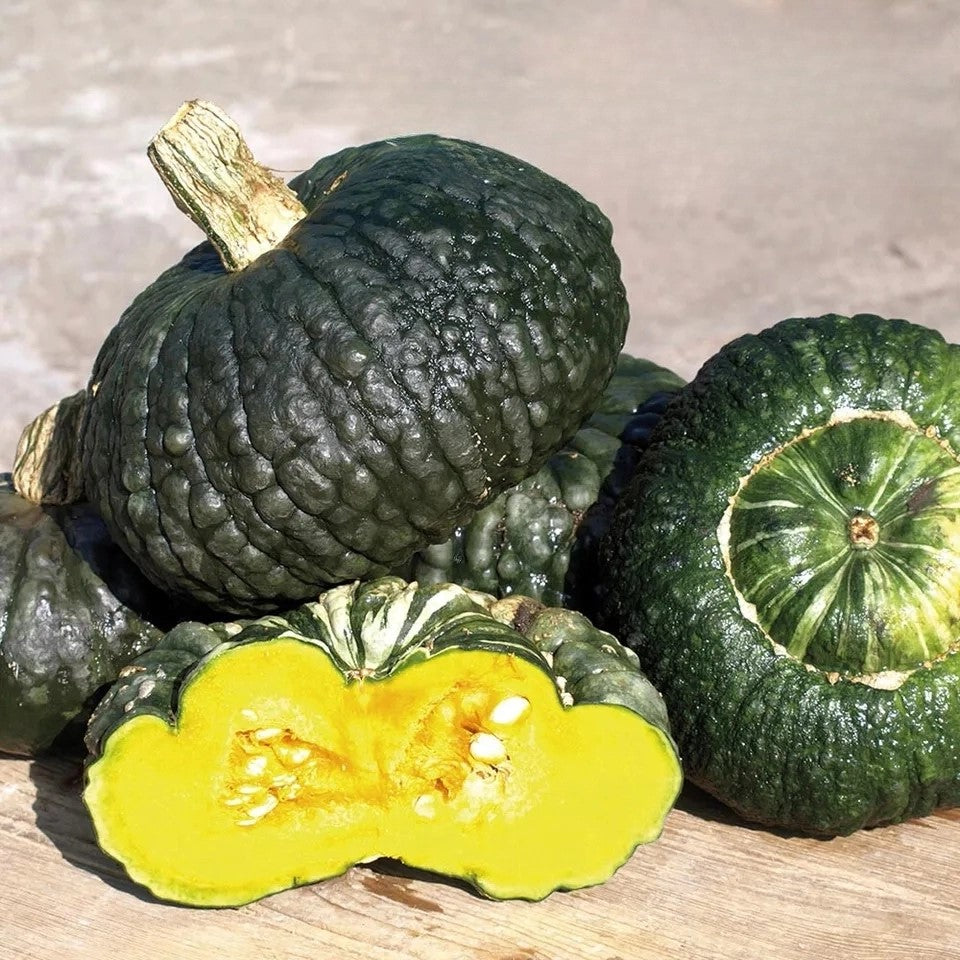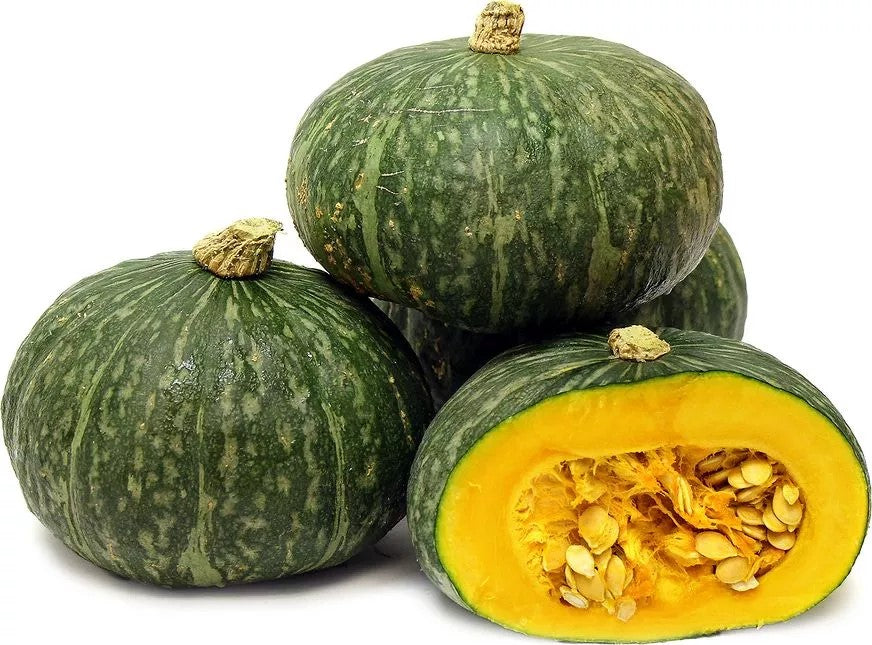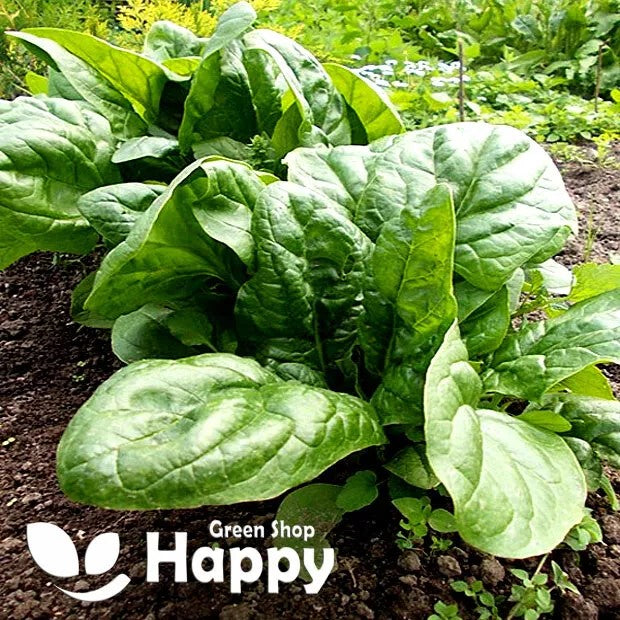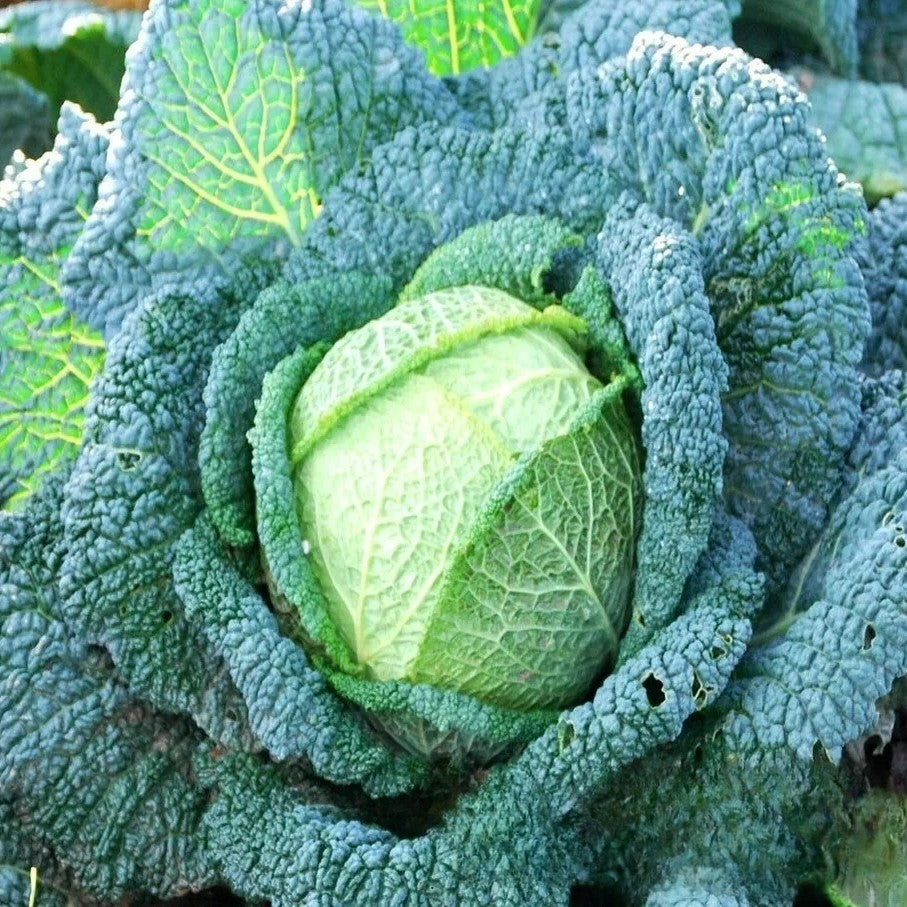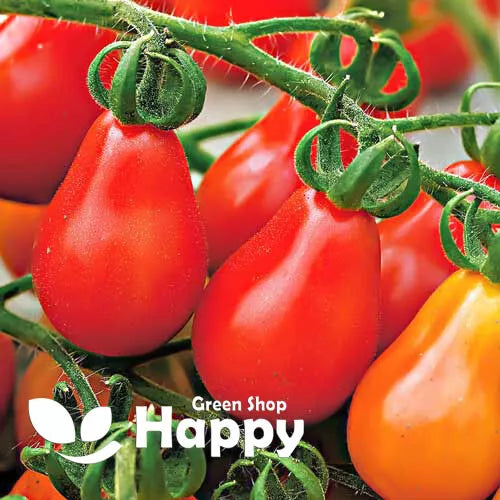Sort by:
52 products
52 products
Sweet Bell Pepper 'California Wonder' Red – Seeds (Capsicum annuum)
Sweet Bell Pepper 'California Wonder' Red is a classic, high-yielding variety producing large, blocky, bright red fruits with a sweet, crisp flavor. Perfect for fresh eating, salads, roasting, or stuffing, it is a versatile addition to any vegetable garden.
This vigorous and productive plant thrives in warm, sunny conditions and is ideal for home gardens, greenhouses, and containers.
How to Grow
-
Sow indoors: February – April
-
Transplant outdoors: May – June, after last frost
-
Depth: 0.5–1 cm
-
Spacing: 40–50 cm between plants, rows 60–80 cm apart
-
Position: Full sun, sheltered and warm
-
Soil: Fertile, well-drained, rich in organic matter
-
Watering: Keep soil consistently moist
Key Features
-
Large, blocky, bright red fruits with sweet, crisp flavor
-
High-yielding and vigorous growth
-
Ideal for fresh eating, salads, roasting, and stuffing
-
Suitable for home gardens, greenhouses, and containers
-
Classic, reliable bell pepper variety
Harvest
-
Harvesting period: July – September
-
Pick fruits when fully colored and firm for best flavor.
Short Tip
Regular harvesting encourages continuous production and prevents fruits from becoming overripe.
Swede – Seeds (Brassica napus)
Swede (also known as rutabaga or Swedish turnip) is a hardy root vegetable that produces large, round roots with golden-yellow flesh and a sweet, earthy flavor. It is an excellent choice for winter storage and a versatile kitchen staple, ideal for roasting, mashing, stews, and soups.
This traditional cool-season crop is easy to grow, highly nutritious, and a reliable addition to any vegetable garden or allotment.
How to Grow
-
Sow outdoors: May – July
-
Depth: 1–2 cm
-
Spacing: 20 cm apart in rows 40 cm apart
-
Position: Full sun
-
Soil: Fertile, firm, well-drained soil enriched with compost
-
Watering: Keep soil moist during dry spells to avoid woody roots
Key Features
-
Traditional root crop with sweet, golden-yellow flesh
-
Excellent for roasting, mashing, soups, and stews
-
Stores well for use throughout winter
-
Hardy and reliable in cooler climates
-
Easy to grow with minimal care
Harvest
-
Harvesting period: October – February
-
Lift roots as needed for fresh use or store for winter months.
Short Tip
Thin seedlings early to give roots space to develop fully.
Strawberry Stick – Seeds
(Chenopodium foliosum)
Strawberry Stick is a unique annual plant grown for its bright red, strawberry-like seeds. These edible seeds are not only nutritious but also add a decorative touch to gardens. Its upright, bushy habit makes it perfect for borders, vegetable gardens, and ornamental planting. Easy to grow and drought-tolerant, it’s both practical and attractive.
Why Grow Strawberry Stick?
-
Bright red, edible seeds
-
Attractive upright, bushy foliage
-
Nutritious and ornamental
-
Easy to grow and drought-tolerant
Key Features
-
Type: Annual
-
Height: 50–80 cm
-
Flowers: Summer
-
Position: Full sun to partial shade
-
Soil: Well-drained, fertile
Ideal For
-
Vegetable gardens and edible landscaping
-
Borders and ornamental plantings
-
Pollinator-friendly gardens
-
Low-maintenance garden displays
Sowing & Growing
-
Sow indoors: February–April in seed trays
-
Sow outdoors: April–May in prepared soil
-
Germination: 10–14 days at 18–20°C
-
Spacing: 25–30 cm apart
-
Care: Moderate watering; remove weeds for best growth
Squash 'Queensland Blue' – Seeds (Cucurbita maxima)
Squash 'Queensland Blue' is a robust pumpkin variety producing large, flattened, blue-grey fruits with sweet, golden-orange flesh. Its rich flavor makes it perfect for roasting, soups, stews, and baking. Known for excellent storage qualities, it keeps well throughout the winter months.
Ideal for home gardens, allotments, and vegetable patches, this variety combines high yield with a striking appearance and outstanding taste.
How to Grow
-
Sow indoors: March – April
-
Sow outdoors: May – June, after last frost
-
Depth: 2–3 cm
-
Spacing: 100–120 cm between plants
-
Position: Full sun, sheltered from strong winds
-
Soil: Fertile, well-drained, enriched with compost
-
Watering: Regular and deep, especially during fruiting
Key Features
-
Large, flattened blue-grey fruits with sweet, golden-orange flesh
-
Excellent for roasting, soups, stews, and baking
-
High-yielding and vigorous growth
-
Long storage life, ideal for winter use
-
Decorative and versatile vegetable
Harvest
-
Harvesting period: September – November
-
Pick fruits when the skin is hard and fully colored for best storage and flavor.
Short Tip
Leave a few centimeters of stem when harvesting to extend storage life.
Squash 'Marina di Chioggia' – Seeds (Cucurbita maxima)
The 'Marina di Chioggia' squash is a traditional Italian heirloom variety, prized for its rugged, dark green, warty skin and rich, sweet orange flesh. Originating from the coastal town of Chioggia near Venice, this unique pumpkin has been a staple in Italian markets for centuries and is still beloved today for its superb flavor in soups, gnocchi, risottos, and baking.
Its fruits are typically 3–5 kg, round, and deeply ribbed, with a long storage life that makes them excellent for use throughout the winter months. A true standout in the garden and kitchen alike!
How to Grow
. Sow indoors: April – May in pots, 2–3 cm deep
. Transplant outdoors: Late May – June, after frost risk has passed
. Sow outdoors: May – June, directly in the ground
. Spacing: 1 m apart in rich, well-drained soil
. Harvest: September – October, when fruits are fully ripened
Key Features
. Italian heirloom pumpkin with striking warty skin
. Fruits weigh 3–5 kg, perfect for storage
. Sweet, dense, orange flesh – ideal for roasting, soups & baking
. Long-keeping winter squash
. Traditional variety still popular in Venice markets
Ideal For
. Traditional and heritage vegetable gardens
. Chefs and home cooks seeking authentic Italian flavors
. Long-term winter storage
. Eye-catching display in kitchen gardens and autumn harvests
Sowing & Harvesting
. Sow: April – June
. Harvest: September – October
Quick Tip
For best results, feed regularly with compost or organic fertilizer and allow fruits to ripen fully on the vine for maximum sweetness.
Squash 'Ambar' Seeds (Cucurbita pepo)
Grow something unique with Squash 'Ambar', a vigorous hybrid variety that produces glossy, dark green cylindrical fruits with excellent texture and flavor. Known for its high yields and uniform fruits, this variety is a reliable choice for both home gardeners and kitchen enthusiasts. Perfect for grilling, roasting, and stuffing, ‘Ambar’ brings versatility and freshness to your summer meals.
How to Grow
-
Sow indoors in April–May or directly outdoors after frost.
-
Use fertile, well-drained soil in full sun.
-
Sow 2–3 seeds 2 cm deep in pots or outdoor stations.
-
Thin to the strongest seedling, spacing 60–80 cm apart.
-
Water regularly and feed for abundant crops.
Key Features
-
High-yielding hybrid squash variety
-
Glossy dark green, uniform fruits
-
Excellent texture and mild, delicious flavor
-
Vigorous, productive plants all season
-
Ideal for grilling, stuffing, or light summer dishes
Ideal For
-
Home gardeners wanting reliable, heavy crops
-
Summer vegetable gardens
-
Fresh, healthy cooking from garden to table
-
Growers looking for uniform, market-quality fruits
Sowing
-
Best time: April to June
-
Depth: 2 cm
-
Spacing: 60–80 cm between plants
-
Position: Sunny, sheltered spot with fertile soil
-
Harvest: From July to September
Quick Tip
-
Harvest fruits regularly when young (15–20 cm) to ensure tender texture and encourage the plant to keep producing.
Spinach 'Matador' – Seeds
(Spinacia oleracea) – Fast-Growing, Productive Variety
Spinach 'Matador' is a vigorous and reliable variety producing large, dark green, smooth leaves with a tender texture and rich flavor. It is well-suited for both spring and autumn sowings, offering multiple harvests of vitamin-rich leaves. This cold-hardy variety is slow to bolt, making it a favorite for home gardeners and kitchen use.
Key Features
-
Type: Leafy annual vegetable
-
Height: 20–30 cm
-
Leaves: Large, smooth, dark green, tender
-
Flavor: Mild, rich, and slightly sweet
-
Harvest: 40–50 days after sowing
-
Special: Good resistance to bolting
Ideal For
-
Fresh salads, smoothies, and juicing
-
Steaming, sautéing, and soups
-
Continuous cut-and-come-again harvest
-
Home gardens, allotments, and pots
Sowing & Growing
-
Sow outdoors: March–May and August–September
-
Spacing: 20–30 cm between rows; thin to 10 cm between plants
-
Soil: Fertile, moist, well-drained soil
-
Sunlight: Full sun or partial shade
-
Watering: Keep soil consistently moist to avoid bolting
Care Tips
-
Harvest young leaves regularly for best taste.
-
Provide light shade in hot summers.
-
Mulch to keep soil cool and retain moisture.
Savoy Cabbage 'Rocket' – Seeds
(Brassica oleracea) – Crisp, Crinkled Leaves & Fast Growth
Savoy Cabbage 'Rocket' is a vigorous, early-maturing variety prized for its tender, crinkled dark-green leaves and compact, dense heads. It delivers a mild, sweet flavor and is ideal for fresh salads, cooking, and steaming. Perfect for home gardens and small-scale cultivation.
Key Features
-
Type: Biennial, grown as annual
-
Heads: Medium-sized, dense, crinkled dark-green leaves
-
Flavor: Mild, sweet, tender
-
Harvest: Early to mid-season
-
Use: Salads, cooking, steaming, stir-fries, freezing
Ideal For
-
Home gardens and allotments
-
Early harvest for fresh culinary use
-
Succession planting for continuous supply
-
Gourmet cooking and healthy meals
Sowing & Growing
-
Sow indoors: February–April for transplanting.
-
Sow outdoors: March–May for summer harvest.
-
Spacing: 45–50 cm between plants, 60–70 cm between rows.
-
Soil: Fertile, well-drained soil with added compost.
-
Sunlight: Full sun for best growth.
-
Harvest: When heads are firm and well-formed.
Care Tips
-
Keep soil consistently moist to prevent splitting.
-
Protect seedlings from cabbage root fly and caterpillars.
-
Fertilize moderately for dense heads.
Red Pear Tomato – Seeds (Solanum lycopersicum)
The Red Pear Tomato is a charming heirloom variety producing clusters of small, pear-shaped, bright red fruits. With a sweet, tangy flavor and firm texture, these tomatoes are perfect for fresh snacking, salads, or adding a decorative touch to dishes. Highly productive and visually appealing, they are a favorite for both garden aesthetics and culinary use.
How to Grow
-
Sow seeds indoors from February to April, 0.5 cm deep in trays or pots.
-
Maintain 18–22°C until germination.
-
Transplant seedlings into larger pots, then outdoors or in a greenhouse after frost.
-
Support plants with stakes or cages to handle heavy clusters of fruit.
Key Features
-
Heirloom pear-shaped fruits in bright red
-
Sweet, tangy flavor and firm texture
-
High-yielding and productive
-
Ideal for fresh eating and salads
-
Attractive ornamental value for gardens and containers
Ideal For
-
Snacking, fresh salads, and garnishes
-
Home gardens and patio pots
-
Heirloom collections and colorful vegetable displays
Sowing & Harvest
-
Sow: February to April
-
Plant out: May to June
-
Harvest: July to September
Quick Tip
-
Pick fruits regularly as they ripen to encourage continuous production and maintain plant vigor.
Showing 27/52


